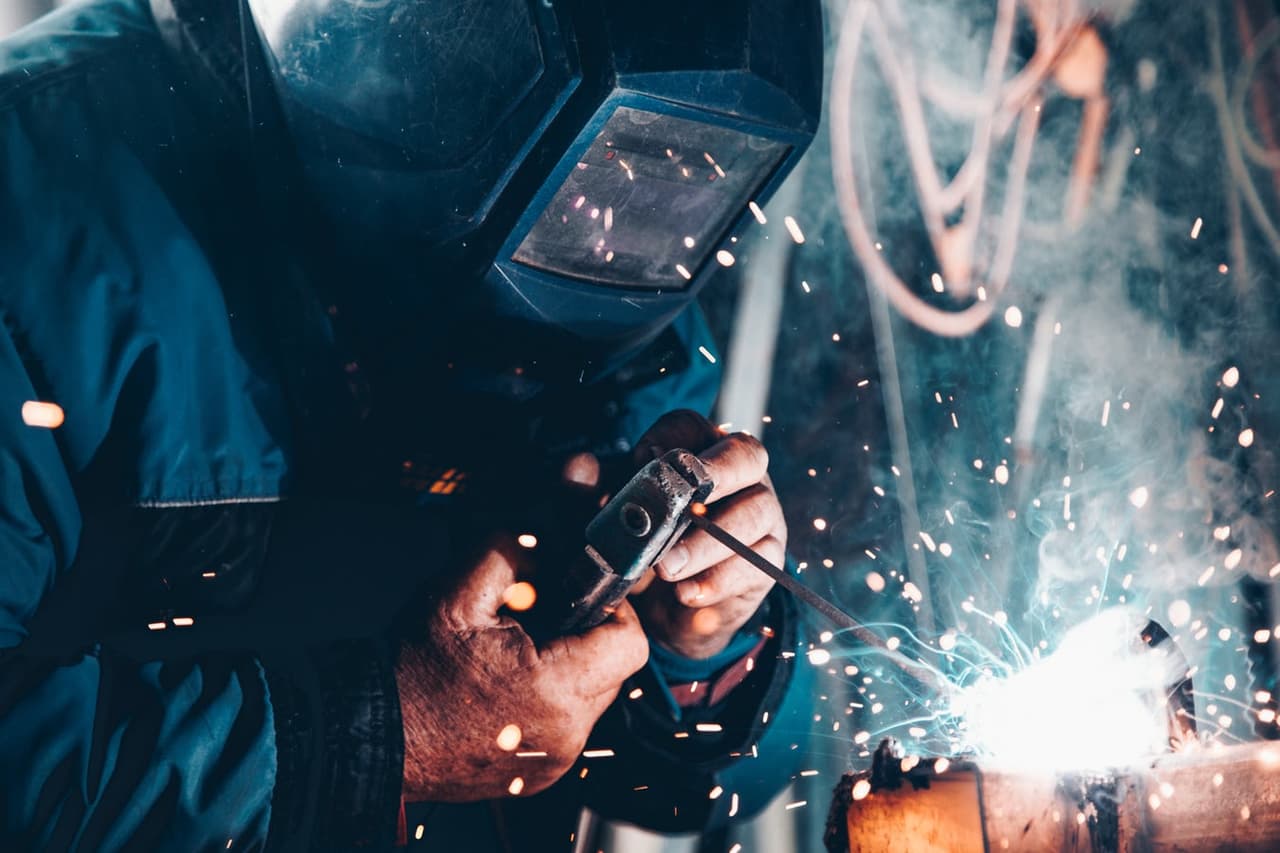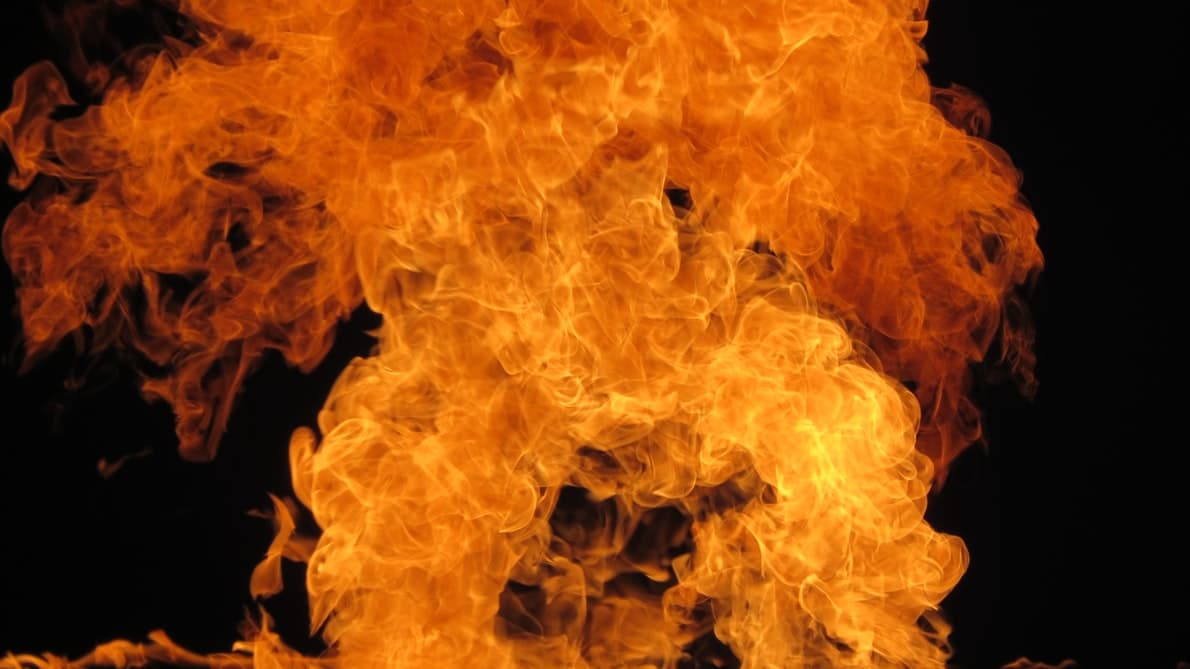An Overview of Welding Prevention Measures
By Editorial Team
Updated on August 19, 2024

Carrying out welding work exposes the worker, as well as individuals nearby, to a broad range of hazards. The risks associated with fumes, gas, fire, and explosions are just some of the hazards welders face.
Several safety guidelines must be observed to ensure the highest level of workplace safety for all workers. Without further ado, here’s a comprehensive overview.
What Are the Safety Precautions to Be Followed When Welding?
Eliminate Flammable Material Hazards
Regardless of the situation, a worksite inspection must be carried out to identify fire hazards and heat sources, as well as any combustible materials. Particular attention must be paid to the floor area where flammable liquids may be stored. Also, the floor should be cleaned to ensure the surface is devoid of any litter or dust.
The current regulation stipulates that a 15-metre radius free of flammable materials around the welding zone must also be maintained at all times. Furthermore, all gear or equipment must be inspected for flaws or defects.
If combustible materials cannot be moved, as a safety precaution, they must be covered with fireproof tarps or guards. To wrap up this point, note that a fire extinguisher should always be present on site.
Control Heat Sources
Regarding oxy-fuel torches used to cut through piping, note that, as a precautionary measure, one has to move all combustible materials away from said tool to avoid triggering a fire, resulting from sparks or small flames. Naturally, oxy-fuel torches should never be aimed at a propane cylinder or toward combustible materials.
As for oxygen cylinders, they should never be handled with oil- or grease-soaked gloves. On another note, note that hot electrode fragments must be disposed of in a metal waste container made to that effect.
Lastly, note that a torch should never be ignited with a friction lighter as matches or lighters may catch fire when coming into contact with torch-emitted spatter or flames.
Proper Ventilation When Welding
Closed-off or somewhat partitioned work areas should be air-conditioned to ensure proper ventilation. To lower humidity levels, the air should be dehumidified whether by extracting moisture or sealing vapour sources. Moreover, installing fans near workers to alleviate ambient heat is recommended.
What Risks Are Welders Exposed To?
Health risks include throat and airway irritation, metal fume fever, lung cancer, skin cancer, nervous system damage, asphyxia, as well as other welding-related health effects.
Safety risks associated with welding include burns, eye damage, electric shock, cuts, and finger and toe injuries. Explosions and fires can also occur.

Photo: Pixabay
Welding Safety Equipment and Gear
Goggles, Clothing, Work Boots, and Welding Helmet
To avoid sparks and burns, workers must wear protective goggles and a welding helmet. Furthermore, welders must also wear flame-resistant work attire, covering every inch of their skin, as well as a liner or sock hood (balaclava) for overhead work. Since the neck area is, unfortunately, often left exposed, sunscreen (at least SPF 30) should be applied to the area. Lastly, the welder should be wearing work boots to offset electric shock or chemical burn hazards.
Water-Cooled Gun
Using a water-cooled gun does call for a few precautionary measures. First, inspect the hose to ensure there are no water leaks. Then, make sure the device’s cord is long enough to make a drip loop far enough away from all electrical outlets. Doing so prevents any risk associated with naturally occurring condensation on the device near the outlet. When not in use, the device should be switched off.
Welding Screens
To shield nearby welders from heat, flash burns, UV rays, etc., welding screens, curtains, or blankets can be set up. Such safety equipment is:
Semi-transparent (PVC vinyl)
Polycarbonate
Flexible
Lightweight
Scratch-resistant
Easy to clean
Earplugs or Earmuffs
Ear protection, like earplugs or earmuffs, should be worn whenever the work at hand involves the risk of particles or sparks entering the ear cavity.

Photo: Pixabay
Health, Safety, and Training: Safety Code Rules for Welding Work
The Safety Code for the Construction Industry, and more specifically the chapter on “Safety and protective devices” (section 3.14.2) stipulates that “Any electric or gas welding or cutting operation and the installation, handling and maintenance of the equipment used for such operations shall comply with CAN/CSA Standard W117.2-M87 Safety in Welding, Cutting, and Allied Processes (...).” Said standard clearly states that a health and safety program must be implemented and enforced on several levels:
Identification of work-related hazards
Explanation of safe work methods for various welding procedures
Implementation of control measures
Proper staff training
Assessment of health and safety program
The aforementioned standard states that a hot work permit must be obtained to ensure that workplace fire and worker safety hazards, along with related risks, have been considered.
The permit itself must be obtained from one of the following individuals:
Supervisor
Building owner (or representative)
Worksite foreman
Workplace health and safety representative
Also worth noting: The permit must be displayed at the worksite for the entire hot work or welding duration. Said permit may come with inspection requests that must be carried out at specific times throughout.
Worksite Supervision During Hot Work
Aside from the safety and prevention measures implemented, note that site supervision must be carried out by a qualified individual, one who has trained accordingly and can identify the main hazards of welding in the workplace.
Following training, the concerned individual will have the necessary authority to halt work if need be to fix the conditions within which the work is executed. The trained staff member must thoroughly inspect the premises, including adjacent or nearby zones, to check whether sparks or heat transfer are likely to affect said areas, thereby constituting a risk.
Even during break hours, their presence is mandatory on-site. Note that worksite surveillance must extend to at least a 30-minute period after work has wrapped for the day. Depending on the work-specific risk levels, said period can be prolonged.
Block Off All Openings Prior to Welding
Also, seal all openings or cracks in the floorboards, walls, and under doors. Ventilation ducts must also be protected and covered adequately. As for portable welding equipment, it must be grounded.
Welding Safety FAQs
Why Wear a Helmet When Welding?
A welding helmet is a piece of personal protective equipment designed to protect the head and eyes from sparks. Given that most head and eye injuries are caused by sparks or UV rays that occur quite frequently when welding or when using a plasma cutter, investing in such gear is highly recommended.
Without protective eyewear, there’s a serious risk of eye corneal injuries, which could turn into permanent eye damage and possible vision loss. Furthermore, a welding helmet shields the welder’s hair from burning while working. In other words, as the age-old saying goes, wear your helmet!
Why Is It Important to Wear Gloves While Welding?
Firstly, welding generates intense heat that may cause severe burns to exposed skin. Gloves provide thermal protection, shielding hands from heat and sparks.
Secondly, welding often involves handling sharp or rough materials, so gloves protect the welder from cuts, scratches, and stab-like wounds, limiting the risk of injuries.
Furthermore, gloves are a barrier against potentially harmful chemical products used during welding, ensuring the individual’s safety and limiting skin exposure to hazardous substances. Overall, wearing gloves is essential to ensure safety and prevent work-related risks when welding.
Want to learn more about welding? Check out these articles:
Looking for something else?
Related articles
The latest industry news, interviews, technologies, and resources.

Editorial Team
•25 Jun 2025
Tearing down walls in your home can seem like an exciting project, especially with the current trend in interior design favouring open-concept spaces. However, don’t grab your hammer and saw just yet! Removing or creating openings in an interior wall is a delicate process that must be handled with care. If done incorrectly, it can lead to ceiling collapse or damage to plumbing, electrical, HVAC systems, and more.

Amanda Harvey
•07 Nov 2023
Being subjected to a house fire certainly brings its share of sadness and concern. Whether we’re thinking of lost memories or the work that’s required to restore our home, as well as the expenses that’ll necessarily accompany it, this is not a time of celebration.

Editorial Team
•24 Sep 2024
Ceramic tile flooring has a slew of advantages. Not only is it a resilient and long-lasting material, but it also requires minimal maintenance and is likely to increase the value of your home.

Editorial Team
•04 Nov 2024
Nothing compares to immersing yourself in a great book in the comfort of your home, nestled in a cozy and perfectly designed reading nook. Whether it’s next to a window overlooking the backyard or a cozy spot near the fireplace, creating a customized reading nook may be the missing link that ties your home's design together. No matter your home’s layout, whether it be a small house or a spacious loft, of modern or traditional design, you’ll find the best-suited solution for you below. Here are 10 inspiring ways to transform a corner of your house into a genuine, tranquil literary sanctuary. From the simplest of designs to the more luxurious options, the following ideas can be adapted to all home sizes and styles, creating a dedicated reading space that mirrors your personality and lifestyle.

Editorial Team
•29 Jan 2025
Making dinner consists of twists, turns, dips and bends, and as a result, designers, architects and homeowners alike are beginning to pay attention to the ergonomics of the kitchen. The science of ergonomics leads to the encouragement of productivity, efficiency as well as control. Using a combination of appliances and fixtures with ergonomic design alongside proper room layout and planning, cooking and working in your kitchen can become comfortable.